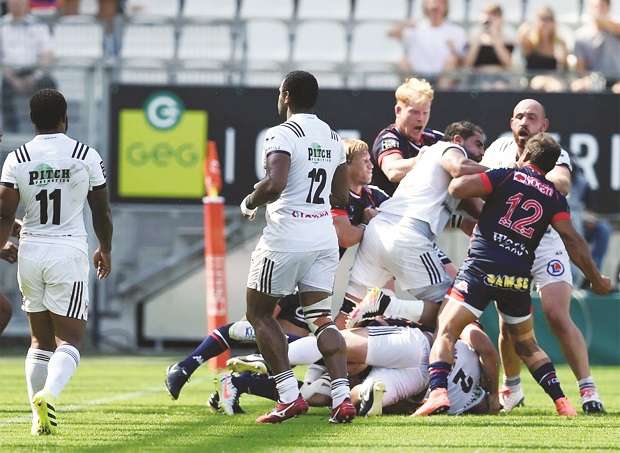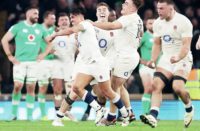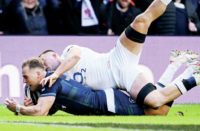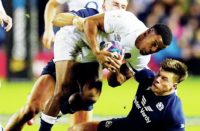 Sometimes it's difficult not to feel a slightly nostalgic tinge when you hear of the French having a mass brawl during a game. The Brive/Grenoble match last week degenerated into a minute long punch-up after Brive prop Damien Jourdain suffered the indignation of being lifted in the scrum by Grenoble's Sona Taumalolo.
Sometimes it's difficult not to feel a slightly nostalgic tinge when you hear of the French having a mass brawl during a game. The Brive/Grenoble match last week degenerated into a minute long punch-up after Brive prop Damien Jourdain suffered the indignation of being lifted in the scrum by Grenoble's Sona Taumalolo.
Not something you see very often nowadays – but lifting was a popular way of showing when a tighthead got his body positioning slightly wrong and was tipping forward.
As a loosehead during my early career and not being particularly big, it was relatively easy to get underneath the tighthead and drive him, causing him to roll and be lifted up by his own second row.
It's not something that is hard to do and even the best players can sometimes be caught out but it is very embarrassing when it happens to you and along with striking against the head, is something you just don't see props doing any more, probably because they would be penalised if they tried.
Although I think that lifting has been outlawed, as far as I know the laws as to when you can strike in the scrum have not altered but you never see tightheads strike for the ball nowadays.
The law allows you to strike for the ball as soon as it has passed beyond the loosehead's shoulder; at that point the tighthead is the closest player to the ball and can beat the opposition hooker to the strike if he can avoid the pressure from his opposite number.
There are many technical ways you can do this, including working as a team with your second row and flanker, transferring your weight to your left leg supported by your second row while getting your flanker to make his pushing angle slightly wider to keep you in line, this relieves pressure on your right leg allowing you to strike for the ball.
Looseheads were also encouraged to follow the ball with their left leg to help protect the ball and stop the tighthead's strike from taking the ball against the head.
In my first game for England against France, I was able to win four balls against the head by using this technique (I took the ball, Brian Moore took the credit) and each time I got a punch from my opposite number, Pascal Ondarts.
Fortunately, as I had been playing prop for 20 years by then, I knew what was coming and kept low while ducking so his punch hit the top of my head.
Pascal was an experienced international player and knew better than to start a major fight in an international match but club games were different.
Most players that played in the amateur era will remember the ‘ten minute adrenaline rush' at the start of the game. When both sets of forwards would square up to each other and a bit of ‘handbag' waving would take place before the referee issued the usual warning: “Right lads you've had your bit of fun, now let's get on with the game before I send someone off.”
As the game has become professional so have the players and we seldom see the posturing of the past here but in France, it's a different matter.
The French club game still has the parochial village against village intensity that fuelled the almost gladiatorial contests of the past but now has the added zest of being paid to represent your town in battle.
As a result, sometimes players overstep the limits of what is, and is not, acceptable, as happened late in the game when Brive's fly-half Matthieu Ugalde was seen making what looked like deliberate contact with the eye of Grenoble's Armand Battle. I have always had a no-tolerance view of gouging, as I believe it is one of the most dangerous things a player can do on the pitch.
Deliberate gouging could result in blinding a player and therefore in my view should always attract the maximum sentence possible even if there is no long-term damage. But that doesn't mean I support a blanket approach.
There have been calls for a one-year ban for any player making contact with the eye area of another player with the thought that if such a ban were universally applied, it would discourage players from putting hands near an opponent's face.
In the quarterfinal of the first World Cup, Paul Rendall was almost blinded by a finger in the eye from Welsh centre John Devereux.
Devereux's finger went almost to the back of Rendall's eye as he handed-off an attempted tackle by ‘The Judge'. It was a total accident in open play and although it indirectly cost England the game and a place in the semi-final it deserved no sanction.
All Black Owen Franks has been accused of making contact with a player's eye area and linked by association to the Brive incident.
I must admit I haven't seen the Owen Franks incident but if, like Devereux, it was an accidental contact, which it appears the independent reviewers seem to think, then it, too, deserved no sanction.
In a fast moving game like rugby, there is always the possibility of accidental injury including to the eye area.
Each case should be investigated to see if it is accidental or deliberate and if it is deliberate, then a one year ban is not enough.


























